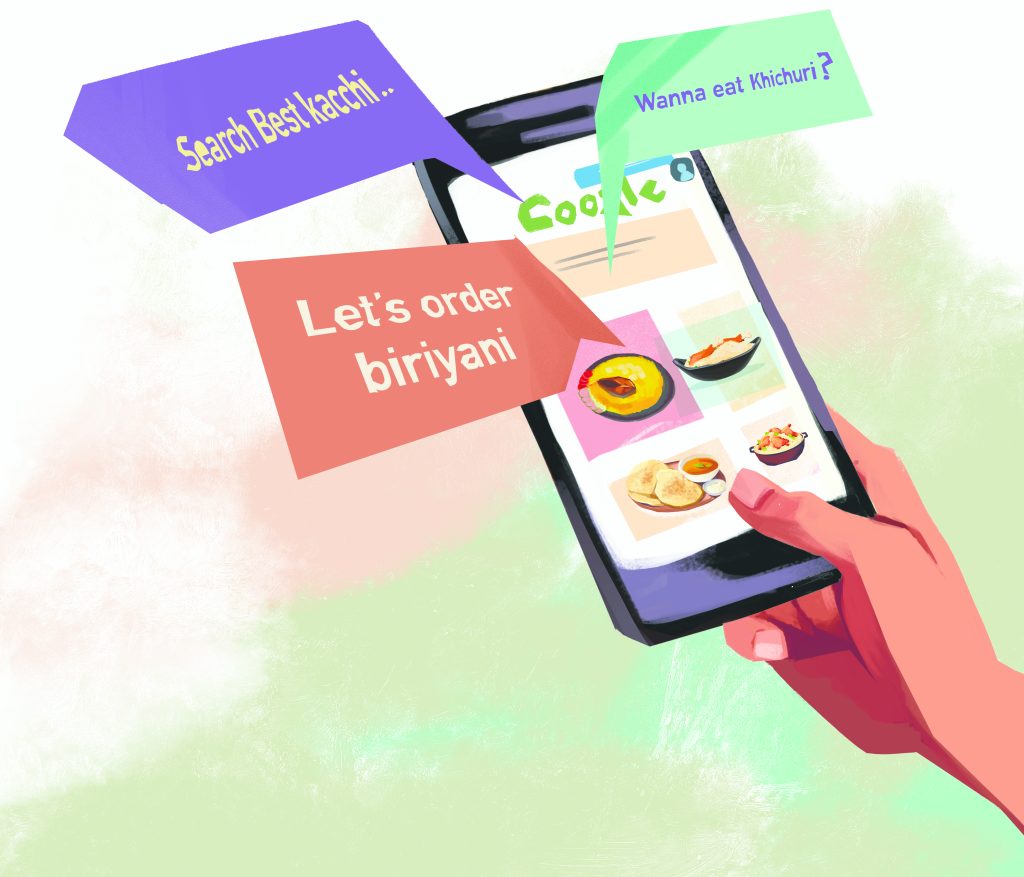It’s dinnertime in Dhaka. After a long day at work, many return home too tired to cook and turn to food delivery apps. Within seconds, they are greeted with lists of ‘Top picks,’ ‘Popular near you,’ or ‘Because you ordered pizza last week.’ Few notice that their meals are already being designed by algorithms.
Ten years ago, ordering food meant calling a restaurant and reading out the menu. Today, apps like Foodpanda, Pathao Food and Foodi decide what shows up first on the screen. Their recommendation engines use past orders, location, time of day, and even popular trends to suggest what to eat. Much like Netflix pushes a movie or Spotify suggests a playlist, food apps nudge users toward certain meals.
“People think they are browsing freely, but in reality, the apps are narrowing down options,” said Sakibul Anwar, a Dhaka-based data analyst. “If pizza is trending, or if a restaurant paid for promotion, it is likely to appear on top. That affects what we end up eating.”
Explaining how Foodpanda’s system works, Mohammad Zahedul Islam, Head of Public Affairs and Public Relations, said the algorithm looks at customer searches, restaurant performance, proximity, and ratings.
“It is designed to help users discover what’s most relevant and satisfying for them,” he added.
The app learns from every tap and order, quietly nudging users toward familiar choices. What starts as a convenience soon turns into a habit, with certain restaurants and deals appearing repeatedly.
Rafatuzzaman Khan, who works in a private bank in Motijheel, said he feels the app knows his habits. “If I order Tehari on Mondays, it pops up again the next Monday. The same few restaurants or deals keep showing up on top. After a while, it feels like I’m eating the same things again.”
This shift is visible across urban Bangladesh. Lunch breaks at offices are now shaped by what appears first on the app. Late-night snacks often come from restaurants promoted through ‘Midnight deals.’ Weekend family dinners may be influenced by notifications like ‘30% off pizza today.’
On the other hand, the apps are also introducing Bangladeshis to new tastes. Korean fried chicken, Japanese ramen, and Turkish kebabs have entered the mainstream through delivery platforms.
The rise of algorithmic eating has created winners and losers. Popular restaurants that score high in ratings or spend on promotions often get more visibility. ‘Ghost kitchens’, restaurants that exist only for delivery, are booming as they know how to play the system. But small eateries without the budget for promotions may struggle to be noticed. Nutrition experts also warn that heavy discounts on fast food may push people to eat less healthy meals.
Zahedul said both data and promotions contribute to higher visibility. “Performance and operational metrics matter, but restaurants can also opt for paid visibility. This way, both paid and high-performing vendors have a fair chance to be discovered. Discounts and combo deals often influence what users explore and order.”
He also mentioned that these help restaurants attract new customers, test new items, and boost orders during peak hours.
The bigger question is whether algorithms are expanding our food horizons or quietly shaping them. Are we discovering more, or simply repeating what the system feeds us? For many urban Bangladeshis, convenience wins over curiosity. The speed of delivery and the lure of discounts often outweigh the desire to try something new and different.
Algorithms now have a seat at every dining table in most cities. And the question remains: when you scroll for your next meal, is it your appetite speaking or the algorithm?


